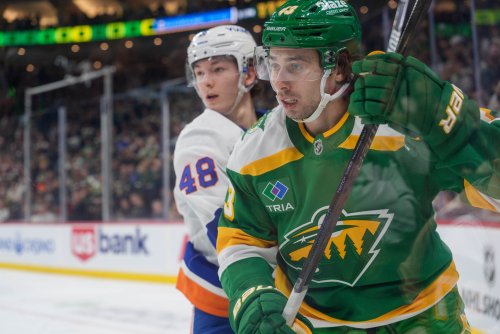
Let's just say, it didn't get any easier. After the jump, TSN's Darren Dreger presents the answers.
If you do not know who Darren Dreger is, I pity you. Dreger is one of the most knowledgeable hockey minds out there. While I do not always agree with his opinion, he, and TSN, usually have NHL news before anyone else. So, it is not surprising that he has the new rules before anyone else. You can check it out on TSN's website.
We'll go question by question from earlier today.
1. Are only these four deals covered under the grandfather clause?
So, all contracts are grandfathered in, meaning the cap hit of no player currently under contract is going to change. This is good news, and bad news. Good because nothing changes immediately, bad because it creates a challenge to know when each contract was signed.
2. If all contracts previously signed are grandfathered in, how will this effect cap calculations? Will there need to be a pre-Kovalchuk contract and post-Kovalchuk contract line?
This was more of a follow-up to question one, and is answered above. We will all need to live with a pre- and post-Kovalchuk contract era. Sigh.
3. If previous contracts are not grandfathered in, how does that effect cap hit calculations? Does Mikko Koivu's cap hit change? Does any player's deal with years higher than others have a cap hit change coming?
Not applicable. Moving on.
4. Why 40 years old?
Not answered, yet. My bet is that it has to do with the statistics of the number of players who play past 40.
Take a minute and re-read this. To be sure, it sounds right away like a boon to teams that sign a player past 40. When they hit that magic number, the cap hit drops dramatically, giving the team instant cap relief. However, keep in mind that only the number of years in the contract up to, and including, 40 count in the averaging effect, making the cap hit in those years go up. I like that part, even if it does add complication. The truly brillaint part of this portion is the last part of the first paragraph.
The players salary in that season becomes his cap hit. Amazing. Simplicity at its finest. This is how it should work. No averaging, no circumvention needed.
With my five questions answered, let's look at the rest of what Dreger has to say.
This is a bit of brutally confusing math that is going to make the job of CapGeek loads of fun in the coming years. Why, you ask? This is all well and good, with $1 million becoming the basic number for 36-40 year olds signed before they are 36. However, what happens if the player is signed at 36? Does the cap hit become $1 million? Is it the value of the salary in the current season? Or does it go back to the old basic averaging style contract? As of right now, there are no answers to that.
Of course, Dan Rosen, and NHL.com staff writer just tweeted this:
In other words... nothing is final. Stay tuned.
Think you could write a story like this? Hockey Wilderness wants you to develop your voice, find an audience, and we'll pay you to do it. Just fill out this form.







Recommended Comments
There are no comments to display.
Join the conversation
You can post now and register later. If you have an account, sign in now to post with your account.
Note: Your post will require moderator approval before it will be visible.